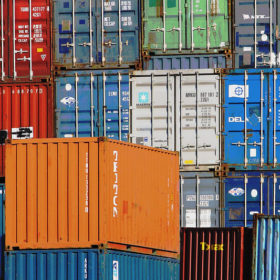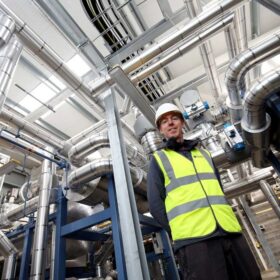Worldwide PV growth set to slow in 2024
The number of PV installations around the world grew by an annual average of 28% between 2019 and 2023, including a 56% jump from 2022 to 2023, according to Wood Mackenzie. Growth is not expected from 2024 to 2028, however.
Empirical approach shows PV is getting cheaper than all the forecasters expect
With the consistently unambitious forecasts for solar trotted out by entities such as the International Energy Agency (IEA) now a matter of record, a German risk management company has tried to predict more realistic figures for 2030 and beyond.
The race for 100% solar
With utility scale solar installations accelerating, Philip Wolfe, founder of PV data consultancy Wiki-Solar, drills into the data to highlight some interesting variations in relative progress around the world.
European utilities turning to large heat pumps
Utilities increasingly recognize heat pumps as a critical technology for heat decarbonization. They are deploying multi-megawatt systems in different parts of Europe to simultaneously serve multiple users and offer new avenues for the decarbonization of buildings.
Engie unit to build 60 minigrids in Zambia
MySol Grid Zambia, a subsidiary of Engie Energy Access (EEA), has secured $7.5 million of debt from the Facility for Energy Inclusion (FEI) to build 60 minigrids. The projects will provide electricity to more than 40,000 people in rural areas.
Global PV manufacturing capacity to reach 1 TW by 2024
PV manufacturing capacity is projected to more than double by 2024, led by China, but oversupply is also anticipated, according to the International Energy Agency (IEA).
Indonesia’s race to net zero
Coal-dependent Indonesia has huge solar potential but progress toward a net zero economy has been sluggish, explain Daniel Kurniawan and Fabby Tumiwa from the Institute for Essential Services Reform (IESR), an Indonesian thinktank.
The green jobs promise
Promising to replace fossil fuel jobs with an identical number of clean energy roles in coal-dependent communities is overly simplistic and ignores the fact that communities need to be brought onside with credible expectations of better-quality employment.
When will the world be fossil free?
Despite the ever-growing number of nations committing to attaining a net-zero economy, there appears little prospect yet of a future free of fossil fuels, as Roger Lewis, an environmental, social, and corporate governance (ESG) expert at Downing LLP explains.
Weekend Read: All of the above
Competition is intensifying in the electrolyzer space. With the International Energy Agency (IEA) expecting 380 GW of hydrogen production capacity in 2030, four different technologies will likely become prominent as demand spikes. We take a look at the market.










